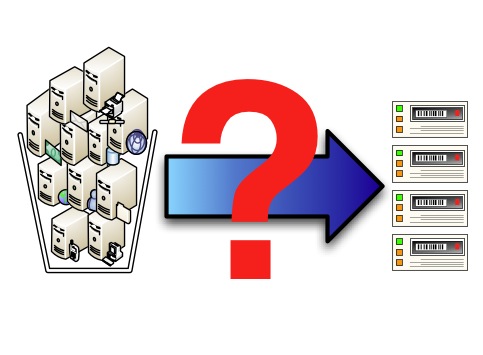Virtualisation.
It’s a fantastic blade to wield through a datacentre. Sweeping and scything, whole racks of equipment are reduced to single servers presenting dozens of hosts. All those driver disks? All those complex and fiddly options for hardware components during OS installation? Brushed aside – all the virtual components are simple and have rock solid drivers. Virtual machine host failing? That’s OK, just push the virtual machines across to another server without the users even noticing.
The improvements virtualisation has made to system efficiency, reliability, etc., in the x86/x86_64 field have been unquestionable.
Yet, like any other sword, it’s double edged.
Virtualisation is about cramming as many systems as is practical within a single bucket.
Backup is something that virtualisation has always handled poorly. And there’s a reason for this – virtualisation is designed for environments where the hosts cooperatively share access to resources. Thin provisioning isn’t just about storage – it’s also about CPU, networking and memory.
Backup isn’t about cooperative sharing of CPU, networking or memory. It’s about needing to get as much data from A to B as possible as quickly as can be done:
Backup at the guest level wants to suck as much data from the virtual network pipes provided by all those machines on the same host at the same time. You want to see the biggest, most powerful virtualisation server your company has ever bought grind to a halt and saturate the network as well? There’s a good chance backing up every guest it runs simultaneously will do the trick just nicely.
When VMware first came up with VCB, it was meant to be the solution. Pull the backup away from the guest, make it part of the hypervisor, and voilà, the problem is solved!
Except it was written by people who believed virtualisation applied only to Windows systems. And thus, it was laughably sad. No, I’m not having a dig at Windows here. But I am having a dig at the notion of homogeneous virtual environments. Sure, they exist, but designing products around them when you’re the virtualisation vendor is … well, I have to say, short sighted.
Perhaps for this reason, or perhaps for less desirable reasons, VCB never really gained the traction VMware likely hoped for, and so something else had to be developed. Something more expansive.
So, VADP was meant to be the big, grand solution to this. And indeed, the VADP API allows more than just Windows systems backups to be performed in such a way that file level recovery from those backups is possible.
What’s the vendor support like though? Haphazard, irregular and inconsistent would probably be the best description. Product X: “Oh, you want to backup a database as well? You need to revert to a guest agent.” Product Y: “Huh? Linux? Guest agent.” Product Z: “Linux? Sure! For any system – well, any that uses ext2 or ext3 filesystems” … you get the picture.
So the problem with VADP is that it’s only a partial solution. In fact, it’s less than half the solution for backing up virtual machines on VMware. It’s maybe 40%. The other 40% is provided by whatever backup product you’re using, and there’s 20% glue.
Between that 40%, 20% and 40%, there’s a lot of scope for things to fall through the cracks.
Where “things” are:
- Guests using operating systems the backup product doesn’t support VADP with;
- Guest using filesystems the backup product doesn’t support VADP with;
- Guests using databases or applications the backup product doesn’t support VADP with.
VADP is the emperor’s new clothes. Everyone is sold on it until the discussions start around what they can’t do with it.
I’m tired of VADP being seen as a silver bullet. That’s the real problem – it doesn’t matter how many hoozits a widget has – if it doesn’t have the hoozit you need, the widget is not fit for your purposes.
I’m not pointing the finger at EMC here. I don’t see a single backup vendor, enterprise or otherwise, providing complete backup solutions under VADP. There’s always something missing.
Until that isn’t the case, you’ll excuse me if I don’t drink the VADP koolaid.
After all, my job is to make sure we can backup everything, not just the easy bits.

I don’t see VADP as trying to be an all-in-one solution for backup of VMs. I see it as a solution to provide VM level backup; that is, backing up the files hosting the VM; something similar to a bare metal backup of a physical server. Also, as a nice touch, it goes the extra mile to allow you to do file level backup for windows machines to spare you the trouble of installing an guest agent.
However, I don’t think any backup admin would consider VADP as a silver bullet when it comes to backup of a virtual environment.
I love VADP for the fact that it’s easy to make VM level backup; so in case of disaster I can just restore the VM on any VMware host with minimum fuss and a high level of reliability; but that’s all.
And that’s a good attitude to have towards VADP.
What leaves me frustrated is where at vendor layers, or non-technical layers, it’s seen or pushed as a “finally! VMware backups are easy and practical!” style silver bullet.
I would have also liked to have seen VMware require a minimum set of supported operating systems/etc in order to be able to deliver a “VADP” solution, too.
vSphere Data Recovery?
vSphere Data Protection even 😉